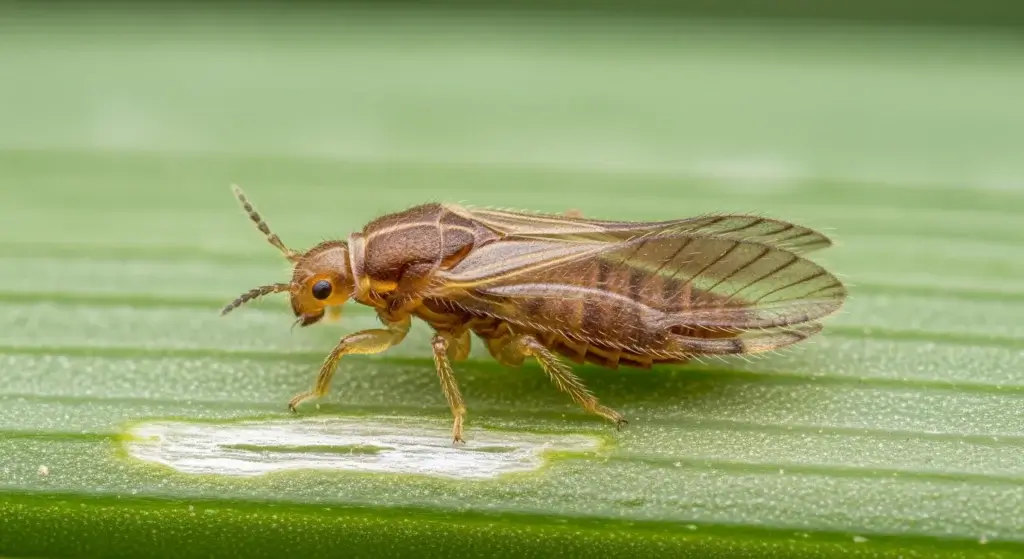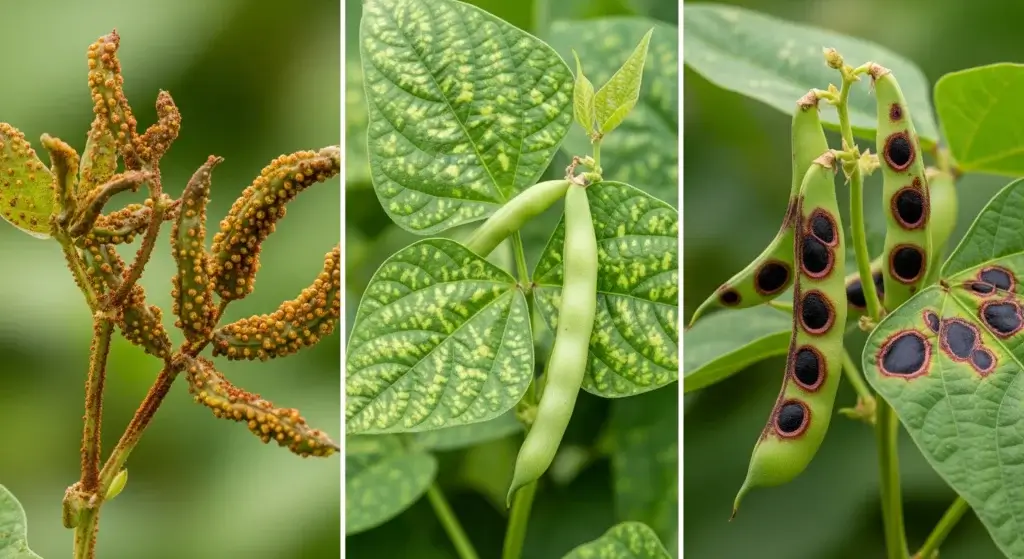
Embarking on the journey of growing your own tomatoes is a fulfilling endeavor, but the presence of pests can pose a significant challenge.
Rather than resorting to harsh chemicals, let’s delve into the realm of natural pesticides for tomatoes.
In this comprehensive guide, we’ll identify common pests that affect tomato plants, introduce eco-friendly pesticide options, provide practical tips for their effective application, and offer additional insights to ensure your tomato plants flourish naturally.
Common Tomato Pests
Tomatoes, prized for their delicious flavor, often find themselves under siege from a variety of pests.
Understanding the nature of these invaders is vital for effective pest management.
Here’s a closer look at some common tomato pests and the havoc they can wreak on your prized tomato plants:
- Read also: A Guide to Natural Pesticides for Lettuce
- Read also: Natural Pesticides for Avocado Trees That Truly Work
Aphids
These tiny, sap-sucking insects can quickly multiply, forming colonies on the undersides of leaves.
Aphids not only extract vital plant juices but also leave behind a sticky substance called honeydew, promoting the growth of sooty mold.
Whiteflies
Whiteflies are notorious for their ability to cluster on the undersides of leaves, resembling a tiny blizzard when disturbed.
They feed on plant sap and, like aphids, excrete honeydew, attracting unwanted mold.
Hornworms
Large, green caterpillars with distinctive horns and hornworms can devour tomato leaves and even fruit.
Their voracious appetite can significantly impact the overall health of your tomato plants.
Spider Mites
Nearly microscopic, spider mites are more challenging to spot.
They thrive in dry, dusty conditions and puncture plant cells to feed on sap, causing stippling and discoloration on leaves.

Natural Pesticide Options
In the quest for a pest-free tomato garden, embracing natural pesticides is not only effective but also eco-friendly.
Here’s a closer look at some potent natural pesticides for tomatoes and how they work:
Neem oil
Derived from the seeds of the neem tree, neem oil is a powerful natural pesticide.
It contains compounds that disrupt the feeding and reproductive cycles of pests. Neem oil acts as a deterrent, making it an effective solution against a variety of tomato pests.
To use, dilute neem oil according to the instructions and apply it to the leaves and stems of your tomato plants.
Garlic spray
A homemade remedy, garlic spray is renowned for its ability to repel pests with its pungent aroma.
To create garlic spray, blend several garlic cloves with water and a small amount of soap. The soap aids in adhesion to plant surfaces.
Spray the mixture on your tomato plants, especially on the undersides of leaves where pests often congregate.
Diatomaceous Earth
This powdery substance, composed of fossilized algae, is lethal to insects but harmless to humans and animals.
Diatomaceous earth works by creating a barrier that damages the exoskeletons of crawling pests, leading to dehydration and death.
Sprinkle diatomaceous earth around the base of your tomato plants, focusing on areas where pests are likely to crawl.
Essential oils
Citrus-based oils such as lemon or orange, along with peppermint and eucalyptus oils, possess natural insect-repelling properties.
To create a natural pesticide spray, mix a few drops of these essential oils with water in a spray bottle.
This mixture disrupts the nervous systems of pests, acting as an effective deterrent.
Ensure to test the spray on a small portion of your plants before widespread application to avoid any adverse effects.
Soap spray
Mild soap solutions can be a simple yet effective natural pesticide.
The soap disrupts the soft bodies of pests, causing them to dehydrate and perish.
Mix a few drops of mild liquid soap (without additives like bleach) with water and spray it onto your tomato plants.
Ensure thorough coverage, especially on the undersides of leaves where pests tend to hide.

Applying Natural Pesticides Effectively
Effectively applying natural pesticides is a crucial aspect of ensuring a thriving and pest-resistant tomato garden.
Here are practical tips to enhance the efficiency of your pesticide application:
Timing is key
Choose the early morning or late evening for pesticide application.
During these times, temperatures are cooler, reducing the risk of evaporation.
Cooler temperatures also promote better absorption of the pesticide by the tomato plants.
This strategic timing maximizes the effectiveness of the treatment.
Uniform application
Achieving even coverage is essential to the success of natural pesticide application.
Ensure that the pesticide is applied to all parts of the tomato plant, including the undersides of leaves where pests often hide.
Use a sprayer to distribute the solution evenly, and pay extra attention to areas prone to infestation.
Consistency matters
Consistent application of natural pesticides is often more effective than sporadic treatments.
Establish a routine for applying pesticides, especially during periods when pests are more prevalent.
Regular treatments create a protective shield, deterring pests and preventing infestations before they become severe.
Monitor your tomato plants for signs of pests and adjust your application frequency accordingly.
Consider weather conditions
Be mindful of weather conditions before applying natural pesticides.
Avoid application during windy conditions, as this may result in uneven distribution and potential harm to non-target plants.
Similarly, refrain from applying pesticides just before rain, as it may wash away the solution before it has a chance to take effect.
Monitor and adjust
Regularly monitor your tomato plants for signs of pest activity.
If you notice an increase in pest pressure, adjust your application frequency or consider trying a different natural pesticide.
Monitoring allows you to adapt your pest management strategy based on the evolving needs of your tomato garden.
Additional Tips for Healthy Tomato Plants

Ensuring the health of your tomato plants extends beyond pest control. Here are additional tips to cultivate robust and thriving tomato plants:
Companion planting
Embrace the concept of companion planting by cultivating specific plants near your tomatoes.
Plants like basil, marigolds, and nasturtiums release natural compounds that act as repellents against certain pests.
Strategically placing these companions around your tomato garden creates a natural barrier, reducing the risk of pest infestations.
Proper watering
Consistent and adequate watering is essential for maintaining the health and resilience of your tomato plants.
Well-hydrated plants are better equipped to withstand pest pressures and recover from potential stress.
Water your tomatoes at the base, aiming to keep the soil consistently moist but not waterlogged.
Use mulch to retain moisture and reduce water evaporation.
Crop rotation
Implementing a crop rotation strategy contributes to disrupting the life cycles of pests and diseases.
Rotate your tomato plants to different locations in your garden each year, preventing the buildup of specific pests in the soil.
This practice is particularly effective against soil-borne pathogens and insects that may overwinter in the soil.
By diversifying the plant species in each location, you create a less hospitable environment for pests.
Healthy soil practices
Prioritize soil health by incorporating organic matter and compost into your garden soil.
Healthy soil supports robust plant growth and enhances the natural resistance of tomatoes to diseases and pests.
Conduct soil tests periodically to assess nutrient levels and adjust amendments accordingly.
Well-balanced soil provides a solid foundation for the overall well-being of your tomato plants.
Pruning and maintenance
Regularly prune your tomato plants to remove excess foliage and improve air circulation.
Proper spacing and pruning reduce the risk of fungal diseases and make your plants less attractive to certain pests.
Inspect your plants regularly for signs of disease or pest activity, and promptly address any issues to prevent escalation.
Natural predators
Encourage natural predators in your garden to help control pest populations.
Ladybugs, predatory beetles, and parasitic wasps are among the beneficial insects that prey on common tomato pests.
Avoid using broad-spectrum pesticides that may harm these helpful allies.
- Read also: Natural Pesticides for Your Herb Garden
- Read also: Natural Pesticides for Your Roses
Conclusion
In the quest for a thriving tomato garden, the use of natural pesticides emerges as a powerful ally.
As you safeguard your harvest, you also play a pivotal role in promoting environmental well-being.
The inherent potency of nature becomes your partner, and through these eco-friendly alternatives, you can nurture robust, pest-resistant tomato plants without compromising safety or flavor.
FAQs
While natural pesticides may require more frequent applications, they can be highly effective in controlling and preventing pest infestations without the harmful side effects of chemical alternatives.
Absolutely! Many natural pesticides are versatile and can be safely used on various plants in your garden.
Aim for consistent applications every 7-14 days, especially during the growing season or when pests are most active. Adjust the frequency based on your observations and pest pressure.



